Latest Thread
You are using an out of date browser. It may not display this or other websites correctly.
You should upgrade or use an alternative browser.
You should upgrade or use an alternative browser.
Organization of Turkic States
- Thread starter Bogeyman
- Start date
TRNC is apart of the Turkic World.
If Polish Tatars are recognised as apart of the Turkic world so is Turkish Cypriots.
Dna i dont care. Us Turks from Warsaw to Siberia have adapted and mixed with the locals.
I know Greeks and Armenians are obbessed with dna. As if they are 'pure'.
Thinking Turks are Yakuts or Tuvans. Tuvans and the Yakuts themselves are mix of Turkic, Mongolic and Native Siberian peoples.
Different appearances of Turks shows what a big family we are.
If Polish Tatars are recognised as apart of the Turkic world so is Turkish Cypriots.
Dna i dont care. Us Turks from Warsaw to Siberia have adapted and mixed with the locals.
I know Greeks and Armenians are obbessed with dna. As if they are 'pure'.
Thinking Turks are Yakuts or Tuvans. Tuvans and the Yakuts themselves are mix of Turkic, Mongolic and Native Siberian peoples.
Different appearances of Turks shows what a big family we are.
The 44-Day War of Karabagh has been a real beacon for Turkic countries when they all stood on Azerbaijan's side, particularly Türkiye.
Türkiye has shown that it's a brotherly country by the full meaning of the word and its unconditional support to Azerbaijan has proven that it's a reliable ally even sometimes against all odds. Türkiye is a leader in a sense of guidance and support and not through pressure and arm twisting.
Hurdles will be made, barricades will be set but if we stick together, they'll be overcome and the world will have to recognise Turkic clout.
Türkiye has shown that it's a brotherly country by the full meaning of the word and its unconditional support to Azerbaijan has proven that it's a reliable ally even sometimes against all odds. Türkiye is a leader in a sense of guidance and support and not through pressure and arm twisting.
Hurdles will be made, barricades will be set but if we stick together, they'll be overcome and the world will have to recognise Turkic clout.
Northern Cyprus: Russia opens up direct flights as Putin builds Turkish alliance
Published: November 17, 2022 1.37pm CET
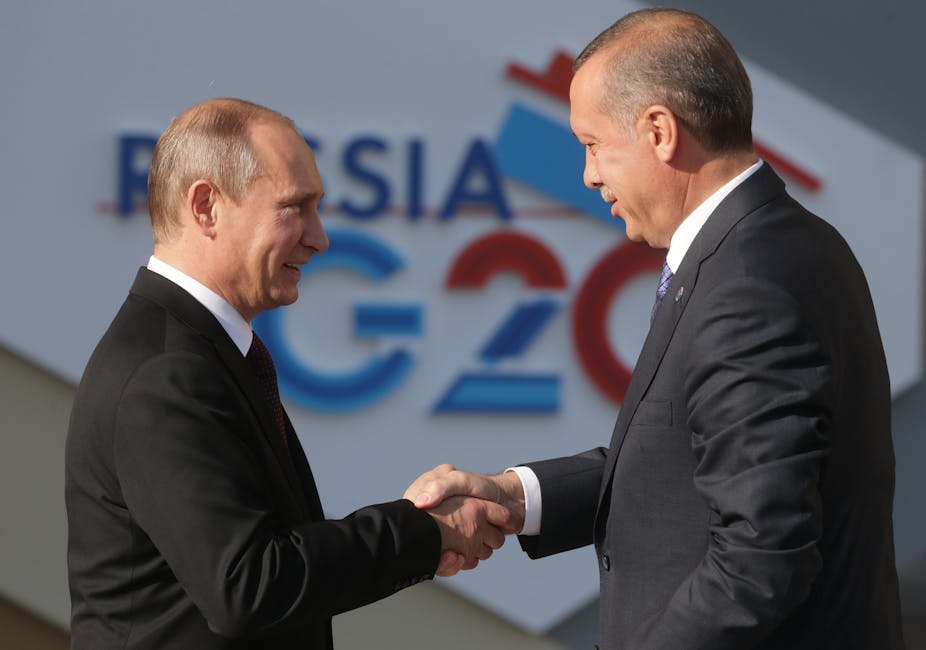
President Putin is looking to improve his relationship with Turkey. DPA/Alamy
Russia has announced plans to begin direct flights to Turkish-occupied northern Cyprus, a state recognised only by Turkey.
This will make Russia the only nation outside of Turkey to fly directly to the territory since it declared independence from the Republic of Cyprus in 1983.
Opening up flights to the self-styled Turkish Republic of Northern Cyprus could well be part of a policy to counter US influence on the island and to enhance Russia’s cooperation with Turkey as part of its alliance building around the Ukraine war. Aeroflot, the Russian flag carrier, recently resumed direct flights to Tehran, widely seen as part of moves to build a closer relationship with Iran.
Some analysts have suggested that Russia’s decision to begin flights to the territory in northern Cyprus may also be in response to Greece and the Republic of Cyprus’s sanctions against Russia.
Russia claims the new flights are aimed at the 10,000 Russians living in northern Cyprus, and that it remains committed to the UN Security Council resolutions relating to Cyprus. The UN established a buffer zone in Cyprus that is patrolled by a UN peacekeeping force to protect the ceasefire negotiated after Turkish forces invaded Cyprus in 1974.However, the move will find favour with Turkey, which Putin sees as an important ally. In October during a speech at the 77th session of the United Nations General Assembly, Turkish president Recep Erdoğan called on the international community to officially recognise the territory. In November, in another significant step, northern Cyprus was admitted into the Organization of Turkic States as an observer member, the first international organisation to recognise its constitutional name.
Russia’s regional ambitions
Russia started increasing its presence in the eastern Mediterranean in 2013, establishing and maintaining a squadron in the area including the Black Sea Fleet as well as moving air defences into Crimea. Russia’s strategic objectives were to secure Russia’s southern flanks, which it considers the Mediterranean to be, and to challenge the naval dominance of the US (supported by other Nato countries) in the region. Russia’s military involvement in supporting Syrian leader Bashar al-Assad was also part of an effort to secure a presence and access to Mediterranean bases and ports.
Russia uses a narrative of shared cultural and religious heritage, along with the existing anti-US or Eurosceptic sentiment, to try and win support in other regions. Putin references shared cultural and religious traditions with Greece, Cyprus and other Mediterranean countries to build on anti-American sentiments. This type of influencing has not resulted in Greece breaking with Nato or the EU so far.
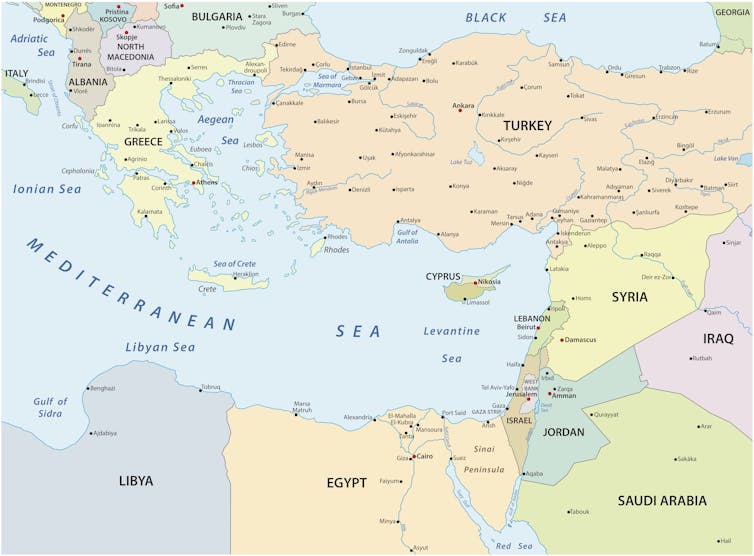
Rainer Lesniewski/Shutterstock
The most important partner for Russia in this region is Turkey. This is a paradoxical relationship because Turkey is a member of Nato, and Russia and Turkey are pursuing contrary objectives in Libya and Ukraine. Russia’s sale of the S-400 missile system to Turkey was a major coup, provoking deep tension between Turkey and Nato and resulting in Turkey losing access to the Patriot missile and the F-35 jet fighter programmes. Turkey’s relationship with Nato was also rocked when it was the only member to ask for conditions on Nato membership for Finland and Sweden.
Russia had established a relationship with the Republic of Cyprus in the past, which included potential military cooperation, but this seems to have come to an end. In a snub to both Russia and Turkey, the US announced in September 2022 a full lifting of an arms embargo against Cyprus.
Flights as symbolism
The first flights from Russia were set to take place on November 15, which coincided with the 39th anniversary of the northern Cyprus declaration of independence. However, due to technical difficulties, the opening of the new airport and routes have now been postponed until early 2023.
The arrival of these flights from Russia is likely to be seen as a political snub by Putin to the Republic of Cyprus and its claims to the whole territory. In March, the Republic of Cyprus sparked anger from northern Cyprus when it announced the closure of its airspace and that claimed by northern Cyprus.
Currently, people wishing to visit northern Cyprus have to fly via Turkey, or drive to the north from Larnaca or Paphos in the Republic of Cyprus. This has hampered northern Cyprus’ tourism industry. Russian tourists are usually one of The Republic of Cyprus’ biggest tourist groups – and for northern Cyprus welcoming tourists from Russia, while the EU and the rest of the island have stopped them arriving, could be an economic boost for Turkish-occupied northern Cyprus.
Turkish Cypriots have felt the constraints of living in an unrecognised territory for almost 40 years. The isolation has affected the territory’s economy significantly and prevents Turkish Cypriots from taking part in global sporting, music and cultural events. Pop star Jennifer Lopez, for example, was forced to cancel a concert in northern Cyprus after receiving furious backlash from Greek Cypriots in 2010.
Extensive international recognition of the territory is unlikely, although Azerbaijan and Pakistan do seem to be taking steps towards closer ties.
And in October, Adil Karaismailoğlu, Turkey’s transport minister, announced that direct flights between northern Cyprus and Kyrgyzstan are being considered.
Northern Cyprus is the latest contender to join a group of outsider nations that Putin has identified as useful, and it may not be the last.

Northern Cyprus: Russia opens up direct flights as Putin builds Turkish alliance
Russia’s plan to start flights to Northern Cyprus is likely to provoke a reaction from Greece.
 theconversation.com
theconversation.com
"The first freight train from Turkiye to Uzbekistan within the Turkic States started its operation. This is an important transport project implemented by our Member States based on the decisions of our Organization's Samarkand Summit and the Transport Connectivity Program."
Not at all feasible.Makes me wonder how feasible a Caspian Sea Bridge would be.
A bridge wouldnt be. an undersea tunnel, however...Makes me wonder how feasible a Caspian Sea Bridge would be.
Last edited:
The average sea crossing between Baku and Turkmenbashi is 250 km.
What needs to be done is very simple, the capacities of Kazakhstan Aktau port, Turkmenistan Turkmanbashi port and Azerbaijan Baku port should be increased immediately and the number of these train ferries should be increased. Train transportation capacity between Uzbekistan and Turkmenistan should also increase. On the other hand, the railway line transiting Istanbul needs to be completed.
Before the current investments, Turkiye was still a transportation hub, but the cargo coming from the sea was transferred to the railways and the cargo coming from the railways was then transferred to the road.
It is important to underline here that the Baku-Tbilisi-Kars railway line is of much greater strategic importance than is commonly believed. Or, to put it more accurately, we are not explaining enough what a historic step this is.
Freight trains from Istanbul and the Mediterranean port of Mersin are brought to the port of Baku, from where they are then transported to Central Asia. The cargoes reach Baku without interruption. Train ferries take the cargo to the opposite shore of the Caspian Sea and continue on their way to Central Asia.
For this purpose, Turkiye's first double-extension rail was laid at Kars Logistics Center in order to eliminate the rail gap difference on the Baku-Tbilisi-Kars railway and to ensure uninterrupted transportation of freight trains from countries such as Russia, Azerbaijan and Kazakhstan to Europe via TR. As it is known, in countries such as Russia, Azerbaijan, Georgia, Kazakhstan on the BTK railway route, rail tracks with a width of 1,520 millimeters are used, while in Turkiye and Europe, rails with 1,435 millimeter standards are used.
After the construction of the BTK line, a bogie transfer station was built in Akhalkalaki. This enabled the loads coming from Europe to go to the geography of the Soviet Union by changing bogies here, but we have attached great importance to one thing from the very beginning, we aimed to bring the Logistics Center in Kars to 2 standards in order to ensure that it can go anywhere in the geography of the Soviet Union by transferring from train to train in Kars. Kars Logistics Center will have both a rail gauge of 1,435 millimeters and a rail gauge of 1,520 millimeters. Thus, trains from both sides will be able to come to Kars and transfer cargo from Kars. Through the Kars Logistics Center, cargoes can now go to Europe as well as Asia and the Far East. In addition, there are 45 thousand tons of grain silos here. Again, the grains coming to our country from China and Kazakhstan can be stocked in 45 thousand tons of grain silos here. Large warehouse investments are also in question.
In this sense, Kars will become the only logistics center and base in Turkiye that can use both standards. After Kars, this line will continue to Kazakhstan and China with 1,520 millimeter rails, and before Kars, it will be able to serve anywhere in Europe up to London with 1,435 millimeter rails. This is a very important advantage, it will enable the uninterrupted transportation of many Railway loads.
***
If you are still in favor of a mega-engineering work in the Caspian that will be the symbol of the Turkic century, my suggestion is not a bridge over the Caspian, but a discussion about bringing the Caspian countries to the Black Sea independently from Russia. Kazakhstan, Uzbekistan and Turkmenistan's access to open seas independent of Russia and China, can shapes the geopolitics of the entire continent.
What needs to be done is very simple, the capacities of Kazakhstan Aktau port, Turkmenistan Turkmanbashi port and Azerbaijan Baku port should be increased immediately and the number of these train ferries should be increased. Train transportation capacity between Uzbekistan and Turkmenistan should also increase. On the other hand, the railway line transiting Istanbul needs to be completed.
Before the current investments, Turkiye was still a transportation hub, but the cargo coming from the sea was transferred to the railways and the cargo coming from the railways was then transferred to the road.
It is important to underline here that the Baku-Tbilisi-Kars railway line is of much greater strategic importance than is commonly believed. Or, to put it more accurately, we are not explaining enough what a historic step this is.
Freight trains from Istanbul and the Mediterranean port of Mersin are brought to the port of Baku, from where they are then transported to Central Asia. The cargoes reach Baku without interruption. Train ferries take the cargo to the opposite shore of the Caspian Sea and continue on their way to Central Asia.
For this purpose, Turkiye's first double-extension rail was laid at Kars Logistics Center in order to eliminate the rail gap difference on the Baku-Tbilisi-Kars railway and to ensure uninterrupted transportation of freight trains from countries such as Russia, Azerbaijan and Kazakhstan to Europe via TR. As it is known, in countries such as Russia, Azerbaijan, Georgia, Kazakhstan on the BTK railway route, rail tracks with a width of 1,520 millimeters are used, while in Turkiye and Europe, rails with 1,435 millimeter standards are used.
After the construction of the BTK line, a bogie transfer station was built in Akhalkalaki. This enabled the loads coming from Europe to go to the geography of the Soviet Union by changing bogies here, but we have attached great importance to one thing from the very beginning, we aimed to bring the Logistics Center in Kars to 2 standards in order to ensure that it can go anywhere in the geography of the Soviet Union by transferring from train to train in Kars. Kars Logistics Center will have both a rail gauge of 1,435 millimeters and a rail gauge of 1,520 millimeters. Thus, trains from both sides will be able to come to Kars and transfer cargo from Kars. Through the Kars Logistics Center, cargoes can now go to Europe as well as Asia and the Far East. In addition, there are 45 thousand tons of grain silos here. Again, the grains coming to our country from China and Kazakhstan can be stocked in 45 thousand tons of grain silos here. Large warehouse investments are also in question.
In this sense, Kars will become the only logistics center and base in Turkiye that can use both standards. After Kars, this line will continue to Kazakhstan and China with 1,520 millimeter rails, and before Kars, it will be able to serve anywhere in Europe up to London with 1,435 millimeter rails. This is a very important advantage, it will enable the uninterrupted transportation of many Railway loads.
***
If you are still in favor of a mega-engineering work in the Caspian that will be the symbol of the Turkic century, my suggestion is not a bridge over the Caspian, but a discussion about bringing the Caspian countries to the Black Sea independently from Russia. Kazakhstan, Uzbekistan and Turkmenistan's access to open seas independent of Russia and China, can shapes the geopolitics of the entire continent.
Last edited:
You do have a point. hope that facility has something like this, so the rail gauge switchover could happen in a smooth, uninterrupted manner.The average sea crossing between Baku and Turkmenbashi is 250 km.
What needs to be done is very simple, the capacities of Kazakhstan Aktau port, Turkmenistan Turkmanbashi port and Azerbaijan Baku port should be increased immediately and the number of these train ferries should be increased. Train transportation capacity between Uzbekistan and Turkmenistan should also increase. On the other hand, the railway line transiting Istanbul needs to be completed.
Before the current investments, Turkiye was still a transportation hub, but the cargo coming from the sea was transferred to the railways and the cargo coming from the railways was then transferred to the road.
It is important to underline here that the Baku-Tbilisi-Kars railway line is of much greater strategic importance than is commonly believed. Or, to put it more accurately, we are not explaining enough what a historic step this is.
Freight trains from Istanbul and the Mediterranean port of Mersin are brought to the port of Baku, from where they are then transported to Central Asia. The cargoes reach Baku without interruption. Train ferries take the cargo to the opposite shore of the Caspian Sea and continue on their way to Central Asia.
For this purpose, Turkiye's first double-extension rail was laid at Kars Logistics Center in order to eliminate the rail gap difference on the Baku-Tbilisi-Kars railway and to ensure uninterrupted transportation of freight trains from countries such as Russia, Azerbaijan and Kazakhstan to Europe via TR. As it is known, in countries such as Russia, Azerbaijan, Georgia, Kazakhstan on the BTK railway route, rail tracks with a width of 1,520 millimeters are used, while in Turkiye and Europe, rails with 1,435 millimeter standards are used.
After the construction of the BTK line, a bogie transfer station was built in Akhalkalaki. This enabled the loads coming from Europe to go to the geography of the Soviet Union by changing bogies here, but we have attached great importance to one thing from the very beginning, we aimed to bring the Logistics Center in Kars to 2 standards in order to ensure that it can go anywhere in the geography of the Soviet Union by transferring from train to train in Kars. Kars Logistics Center will have both a rail gauge of 1,435 millimeters and a rail gauge of 1,520 millimeters. Thus, trains from both sides will be able to come to Kars and transfer cargo from Kars. Through the Kars Logistics Center, cargoes can now go to Europe as well as Asia and the Far East. In addition, there are 45 thousand tons of grain silos here. Again, the grains coming to our country from China and Kazakhstan can be stocked in 45 thousand tons of grain silos here. Large warehouse investments are also in question.
In this sense, Kars will become the only logistics center and base in Turkiye that can use both standards. After Kars, this line will continue to Kazakhstan and China with 1,520 millimeter rails, and before Kars, it will be able to serve anywhere in Europe up to London with 1,435 millimeter rails. This is a very important advantage, it will enable the uninterrupted transportation of many Railway loads.
***
If you are still in favor of a mega-engineering work in the Caspian that will be the symbol of the Turkic century, my suggestion is not a bridge over the Caspian, but a discussion about bringing the Caspian countries to the Black Sea independently from Russia. Kazakhstan, Uzbekistan and Turkmenistan's access to open seas independent of Russia and China, can shapes the geopolitics of the entire continent.
Last edited:
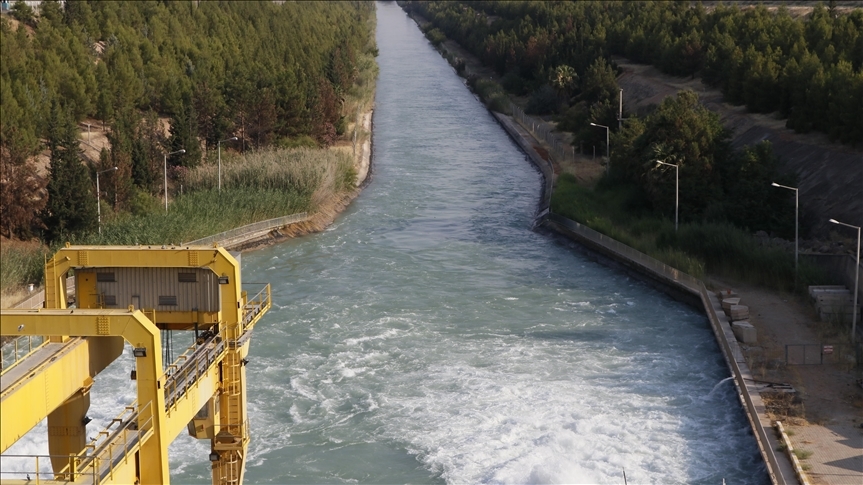
Kazakhstan, Kyrgyzstan and Uzbekistan will jointly build a hydroelectric power plant
According to the statement made by the Ministry of Energy of Kazakhstan, Minister Bolat Akçulakov held talks in Bishkek, the capital of Kyrgyzstan.
Kazakh Minister Akçulakov met with Kyrgyzstan Energy Minister Talaybek Ibrayev and Uzbekistan Energy Minister Curabek Mirzamahmudov.
After the meeting, the ministers signed the roadmap for the construction of Kambarata Hydroelectric Power Plant in Kyrgyzstan.
In the aforementioned roadmap, the parties agreed on the conditions for the implementation of the project and determined the steps to be taken to put the plant into operation on time.
Kambarata Hydroelectric Power Plant, which will be the largest in Kyrgyzstan, is also expected to provide energy to Central Asian countries and balance the region's water needs.
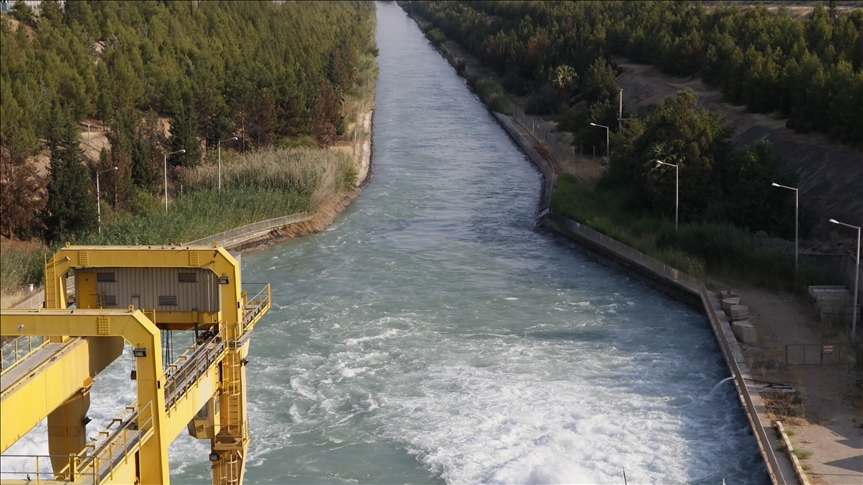
Kazakistan, Kırgızistan ve Özbekistan birlikte hidroelektrik santrali inşa edecek
Kazakistan, Kırgızistan ve Özbekistan, Orta Asya’ya elektrik sağlayacak ve bölgenin su ihtiyacını dengeleyecek olan Kırgızistan’daki Kambarata Hidroelektrik Santrali'ni birlikte inşa etme konusunda anlaştı. - Anadolu Ajansı

The Kazakhstan Language Institute has announced the new Kazakh alphabet.

One of the most critical stages in the transition of Turkic states to a common alphabet is the use of the new Kazakh alphabet in Kazakh Turkish. Unlike the Turkiye's Turkish alphabet, the letters C and Ç are absent, and N and Ü consist of two sounds each. This is due to sound differences in the dialect. There are 10 vowels in the 31-letter alphabet.
In addition to Kazakhstan, Uzbekistan will gradually adopt the Latin alphabet from 2023.
Thus, respectively Azerbaijan returned to its alphabet (banned during the Soviet era) in 1991. Turkmenistan followed in 1993, and now Uzbekistan and Kazakhstan have started the transition to the common alphabet from 2023. Only Kyrgyzstan remains. In 2022, Dr. Kanybek Osmonaliyev, who participated in the Turkic World Common Alphabet Workshop on behalf of Kyrgyzstan, announced that the Kyrgyz language institution will complete its work on this issue in a very short time and will switch to the Latin alphabet standard.
Thus, by 2024-2025, 7 independent Turkic states, excluding diaspora and minority or affiliated federated states, will have reached the common alphabet standard and completed the most critical stage in the field of cultural integration.

One of the most critical stages in the transition of Turkic states to a common alphabet is the use of the new Kazakh alphabet in Kazakh Turkish. Unlike the Turkiye's Turkish alphabet, the letters C and Ç are absent, and N and Ü consist of two sounds each. This is due to sound differences in the dialect. There are 10 vowels in the 31-letter alphabet.
In addition to Kazakhstan, Uzbekistan will gradually adopt the Latin alphabet from 2023.
Thus, respectively Azerbaijan returned to its alphabet (banned during the Soviet era) in 1991. Turkmenistan followed in 1993, and now Uzbekistan and Kazakhstan have started the transition to the common alphabet from 2023. Only Kyrgyzstan remains. In 2022, Dr. Kanybek Osmonaliyev, who participated in the Turkic World Common Alphabet Workshop on behalf of Kyrgyzstan, announced that the Kyrgyz language institution will complete its work on this issue in a very short time and will switch to the Latin alphabet standard.
Thus, by 2024-2025, 7 independent Turkic states, excluding diaspora and minority or affiliated federated states, will have reached the common alphabet standard and completed the most critical stage in the field of cultural integration.
Geographically, Uighurs are one of the most distant Turkic communities to me. The loan words of Uyghur Turkish naturally differ from the loan words of Anatolian Turkish because of the intensity of interaction with different cultures. Nevertheless, for a speaker of Istanbul Turkish, the intelligibility is about the same as it would be for someone speaking with nomads living in the Taurus Mountains or Black Sea plateau people migrating from the Caucasus. It is generally above 80%. If you go towards the west, one of the most distant communities is the Gagauz, and again intelligibility is around this level.I am curious, how similar these Turkic languages are? Do guys understand 20% of what others says? 40%?
If you are asking specifically about Kazakhs, I would say that they have the lowest level of intelligibility in the language group for us. If you don't have a familiar ear for sounds, you will have a hard time understanding it. Most words are the same, but there are differences in sound and tone. If you don't use loan words, Azerbaijan, Turkmenistan, TRNC, Iran, Syria and levant, Iraq, whole balkans and Turkiye speak almost the same language, as dominantly Oghuz Turks.
Last edited:
V
v.Kruska
Guest
When was "see your two maps" today's Denmark and Germany ever controlled or ruled over by a Turkic tribe or empire? or Turkic language/religion and culture?
Also e.g. the Mughal Empire, the Timurid Empire, the Hun's and that of Mongol ruled China (Genghis-Kublai Kahn) has no connection towards some assumed Turkic empire - just because Turkic tribesmen of various tribes and locations shared the same language roots and culture and intermixed during the centuries/millennia of raids and conquest with the respective original population of former empires and kingdoms/fiefs - doesn't constitute a Turkic empire.
As such the only real Turkic empire that ever evolved from Turkic occupied conquered territory and effectively displacing previous cultures, tribes, religion and civilizations was the Ottoman Empire.
This is incorrect. Mughal ruling class were of Turkic origin, Timur himself was of Turkic origin. Huns are debatable, while they intermixed with Turkic people and have shared heritage, they appear to be a separate steppe peoples. As for the Mongols, there's a reason their conquests used to be referred to Turko-Mongol invasions, a huge part of the various Khans' armies were Turks in addition to Mongols.When was "see your two maps" today's Denmark and Germany ever controlled or ruled over by a Turkic tribe or empire? or Turkic language/religion and culture?
Also e.g. the Mughal Empire, the Timurid Empire, the Hun's and that of Mongol ruled China (Genghis-Kublai Kahn) has no connection towards some assumed Turkic empire - just because Turkic tribesmen of various tribes and locations shared the same language roots and culture and intermixed during the centuries/millennia of raids and conquest with the respective original population of former empires and kingdoms/fiefs - doesn't constitute a Turkic empire.
As such the only real Turkic empire that ever evolved from Turkic occupied conquered territory and effectively displacing previous cultures, tribes, religion and civilizations was the Ottoman Empire.
The map is exaggerated, I agree, but you are not correct on those accounts. If anything, Mughal control seems to be the most exaggerated as they never properly controlled the south of the Indian subcontinent as I recall.
V
v.Kruska
Guest
Agreed - also it seems to be the known issue of Turkic leaders-royal families, holding the power of these Empires and as such wrongly in my opinion leading to referring the entire Empires as being Turkic.....The map is exaggerated, I agree, but you are not correct on those accounts. If anything, Mughal control seems to be the most exaggerated as they never properly controlled the south of the Indian subcontinent as I recall.
Just because the German Staufer Kaiser's owned Sicily, doesn't make the Staufer Empire and all it's territory and population Germanic.
Timur was a Mongol Kahn and presumably of Turkic/Mongol ancestry - again due to centuries/millennia of interracial mixing there is probably not even a genetic distinction possible between a Mongol and a Turkic tribesmen.
However in Chinese history and transcripts they clearly distinguish between Mongols. Huns and Turkic tribes.
You are right, Timurid and Mughal empire are somewhat incorrectly classified as Turkic empires.When was "see your two maps" today's Denmark and Germany ever controlled or ruled over by a Turkic tribe or empire? or Turkic language/religion and culture?
Also e.g. the Mughal Empire, the Timurid Empire, the Hun's and that of Mongol ruled China (Genghis-Kublai Kahn) has no connection towards some assumed Turkic empire - just because Turkic tribesmen of various tribes and locations shared the same language roots and culture and intermixed during the centuries/millennia of raids and conquest with the respective original population of former empires and kingdoms/fiefs - doesn't constitute a Turkic empire.
As such the only real Turkic empire that ever evolved from Turkic occupied conquered territory and effectively displacing previous cultures, tribes, religion and civilizations was the Ottoman Empire.
i cannot speak for Timurid empire as i dont know much about it, but i can definitely, and rightfully talk about the Mughal empire. because IT IS OUR HISTORY, IN OUR LAND AND DEEPLY RELATED TO US, MUCH MORE THAN the people lives in modern Turkiye.
Trying to establish Turkic empire as Mughal empire's somewhat only and primary identity just because its rulers had Turkic-Mongol origin, is quite misleading.
It is nothing against Turks, they are our brothers and we love them. However, to just broadly brush MUGHAL EMPIRE as Turkic empire is problematic and lot of times this habit, overlook the empires unique nature of multiple cultural, religious and ethnic identities which are equally if not worth more as its Turkic identity. And this effort sometime may feel disrespectful to other indigenous identities which were equally part of Mughal empire.
Actually, for me broadly speaking, it make little sense to associate the idea of modern ethnic groups onto highly complex and complicated empires of old.










